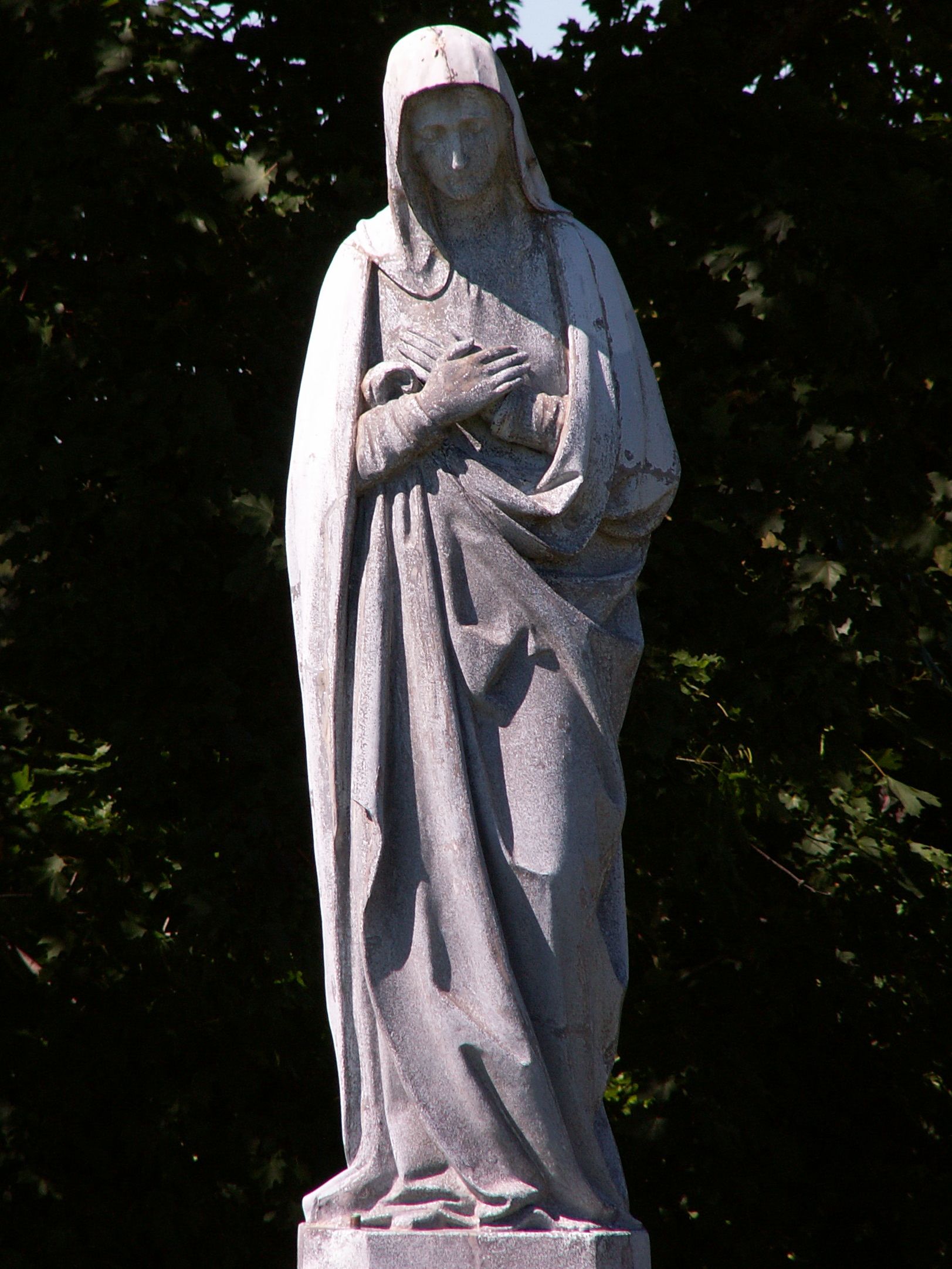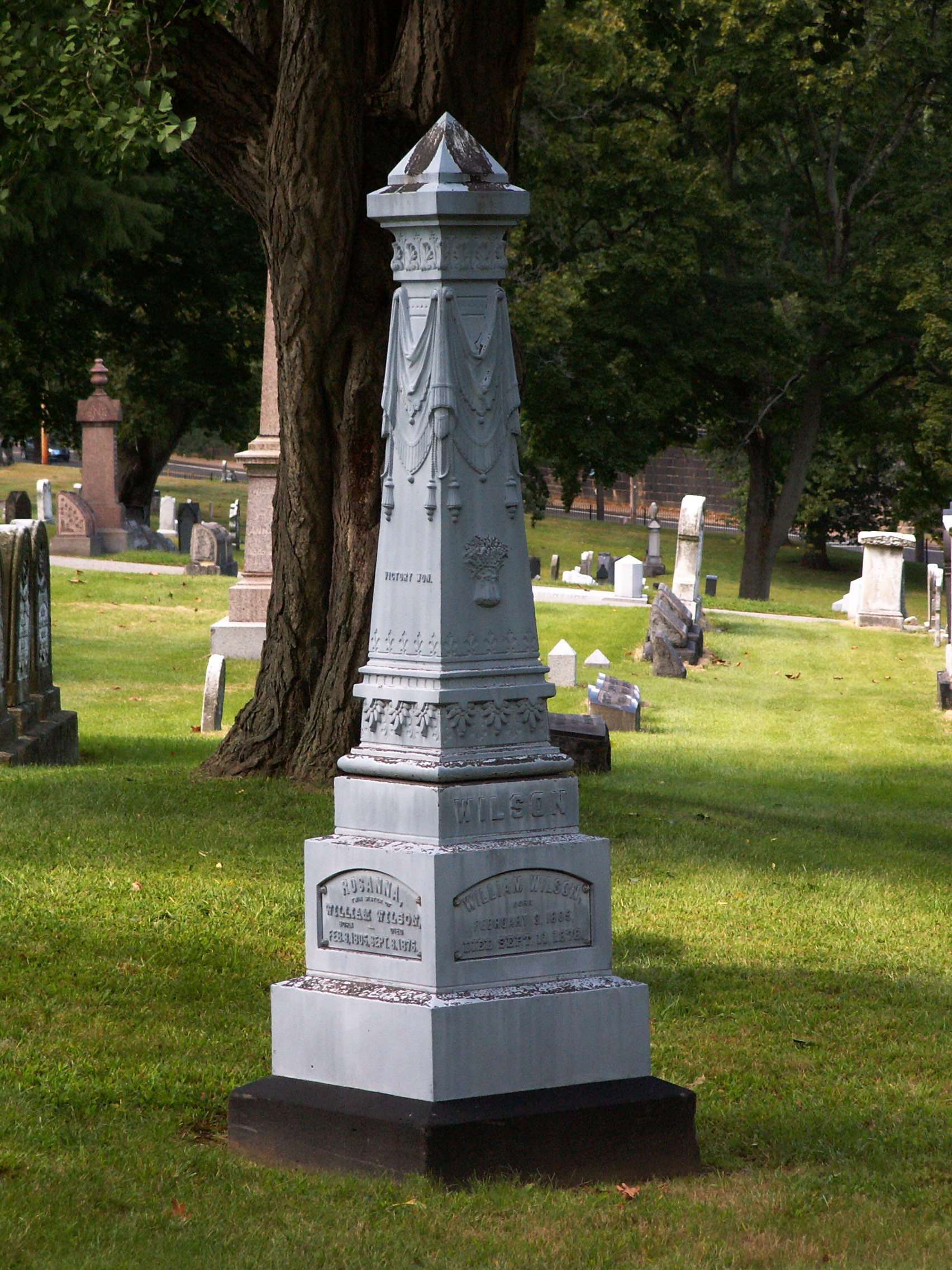Old Pa Pitt seeks out zinc monuments, so he is especially delighted to bring you a fine Calvary group in zinc. He does not know the date exactly, but he would guess from the style, and from the fact that zinc statues of this sort have not been readily available for almost a hundred years, that it dates from the early twentieth century.
-
Zinc Calvary Group, St. John Vianney Parish Cemetery
-
Wilson Monument, Union Dale Cemetery
-
Ingold Monument, Allegheny Cemetery
A zinc or “white bronze” Gothic monument to Harriet Dunseath Ingold, mourned by her husband—but there is no indication that he was buried with her. Zinc was, according to the cemetery’s Web site, forbidden in the Allegheny Cemetery, but several plot owners managed to sneak in zinc monuments anyway. They are all still in good shape, with their inscriptions as legible as when they were installed—more than can be said for many of the much more expensive marble monuments nearby.
Because we have the catalogue, we know that this style of monument was the Monumental Bronze Company’s Design No. 122.
-
Wise Monument, St. Clair Cemetery

A zinc or “white bronze” monument, still in very good shape (as they usually are), except that one of its panels is missing.
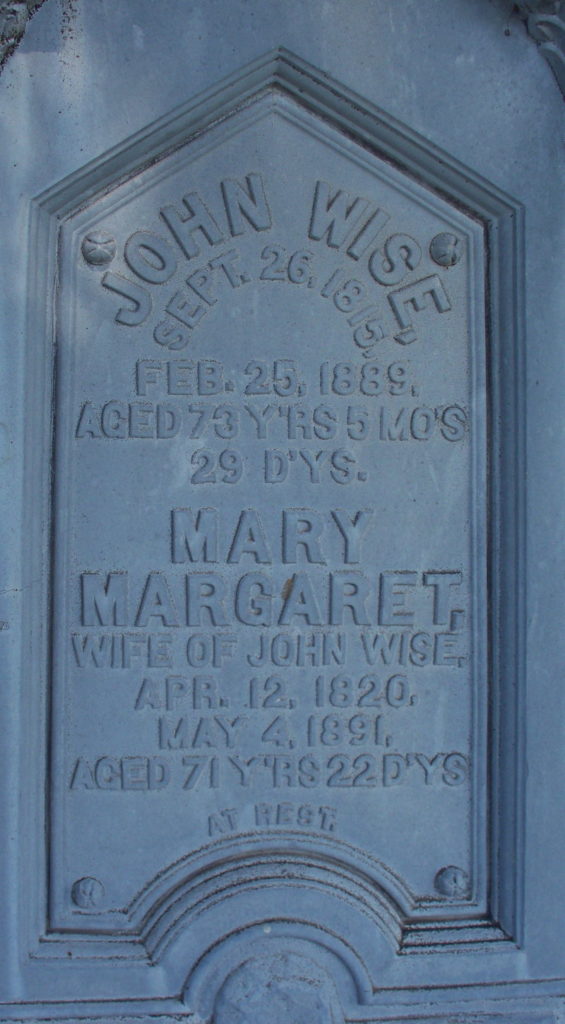
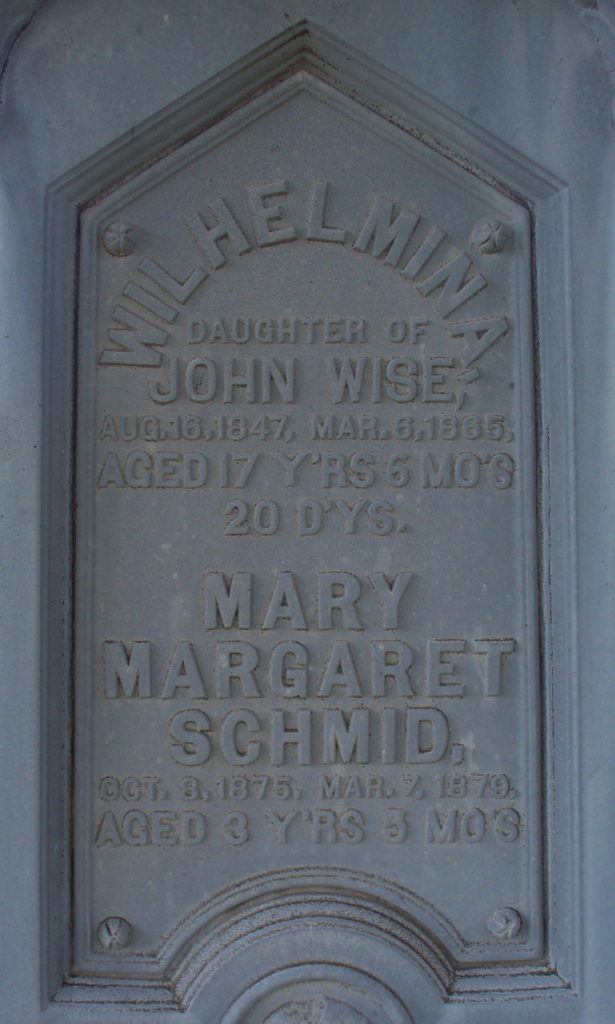
There is a small genealogical mystery here, and Father Pitt does not have the time to research the answer to it. The monument remembers John (died 1889) and Mary Margaret (died 1891) Wise, as well as Wilhelmina, “daughter of John Wise,” who died at 17 in 1865. But who is the little girl Mary Margaret Schmid, who died at three years old in 1879? Was she a granddaughter, born to another Wise child not mentioned here, and named for her grandmother? Perhaps the answer was on that missing panel.

KONICA MINOLTA DIGITAL CAMERA -
Prell Monument, Spring Hill Cemetery

Monuments have stories to tell; sometimes they gossip, and sometimes they proclaim the achievements of the deceased. Every once in a while the story is unbearably sad. Here, on this unusually splendid zinc shaft, is one of those stories.

KONICA MINOLTA DIGITAL CAMERA Edward and Elizabetha Prell had a daughter Sophia, whom they must have loved very much. In 1874, while Elizabetha was well along in her pregnancy with a younger sister for Sophia, the little girl died at the age of five. A month and a half later, the baby was born, and named Sophia again, in honor of her so recently departed sister.
In 1876, three days before the colossal celebrations that marked the hundredth anniversary of American independence, the second Sophia died, a month shy of two years old.

A week later, on July 8, Elizabetha died as well. She may have been carried off by the same disease that killed her daughter. Or she may have, as the Victorians would say, died of grief; and who can blame her?
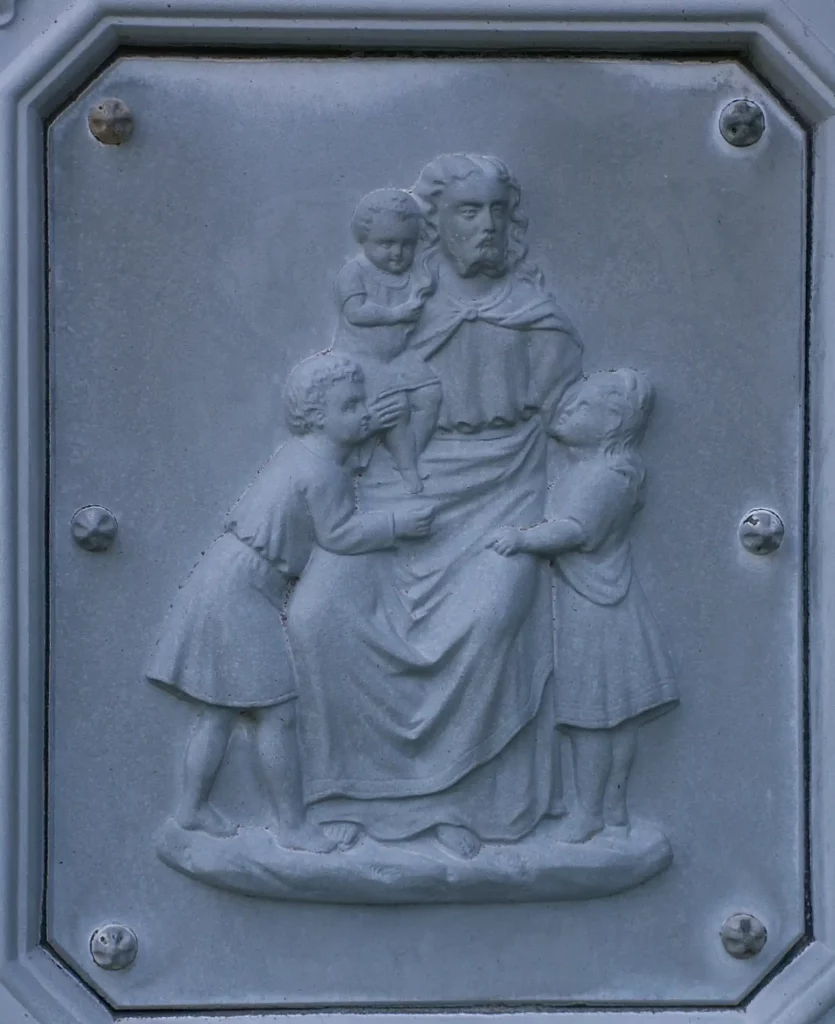


The monument makes the best possible use of the standard panels in the “white bronze” dealer’s catalogue. What could be better than the image of Christ welcoming the little children? Two angels are also appropriate. And the clasped hands…well, they were in the catalogue, too.

The statue of Hope (we presume; she has lost her symbolic attribute, probably an anchor) bolted to the top of the monument seems to be of a different material.
This is actually the first German-language “white bronze” monument old Pa Pitt has run across. The German-speaking population was huge in the late 1800s, so it made good sense for monument-makers to have stock epitaphs in German.




